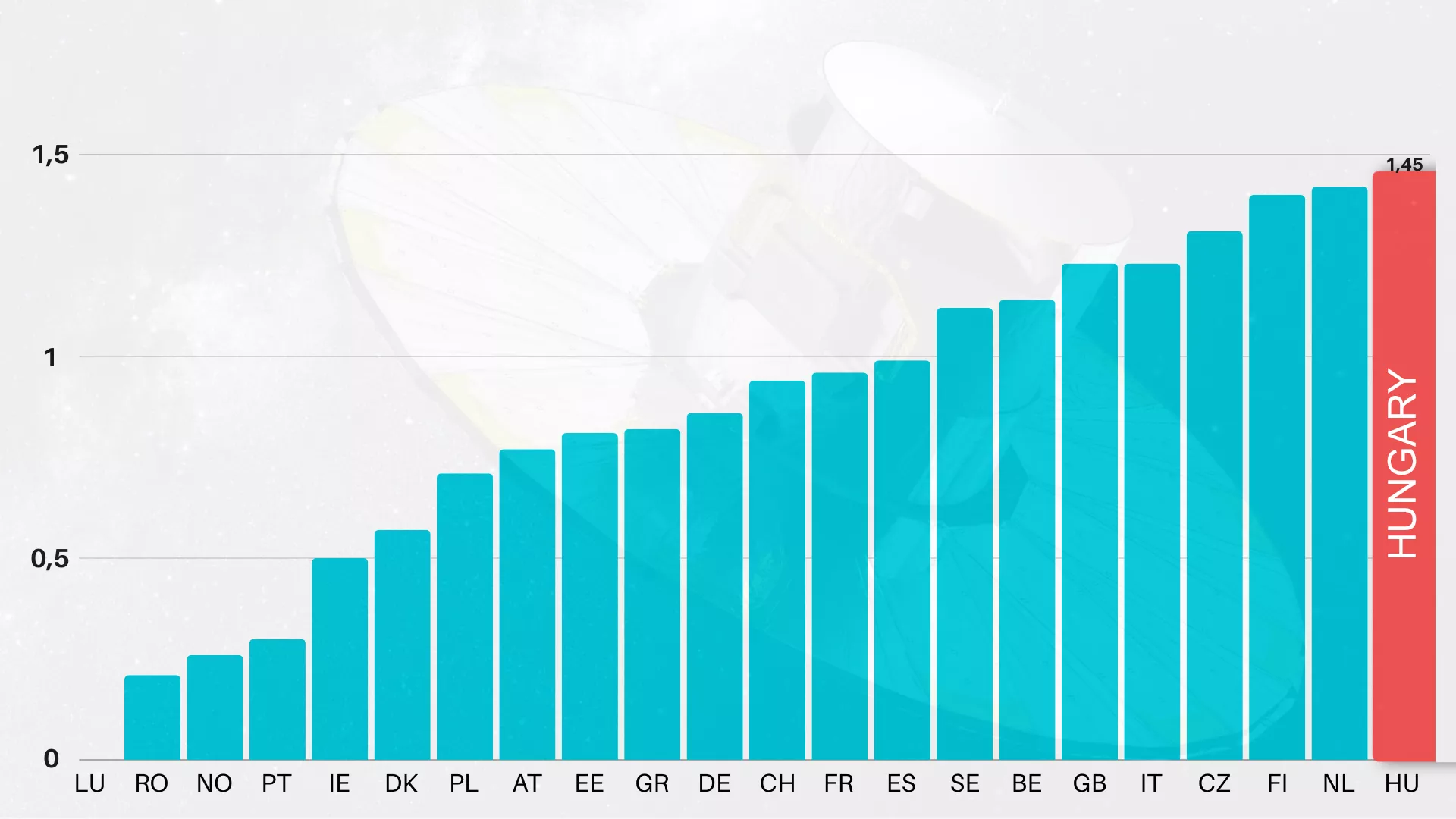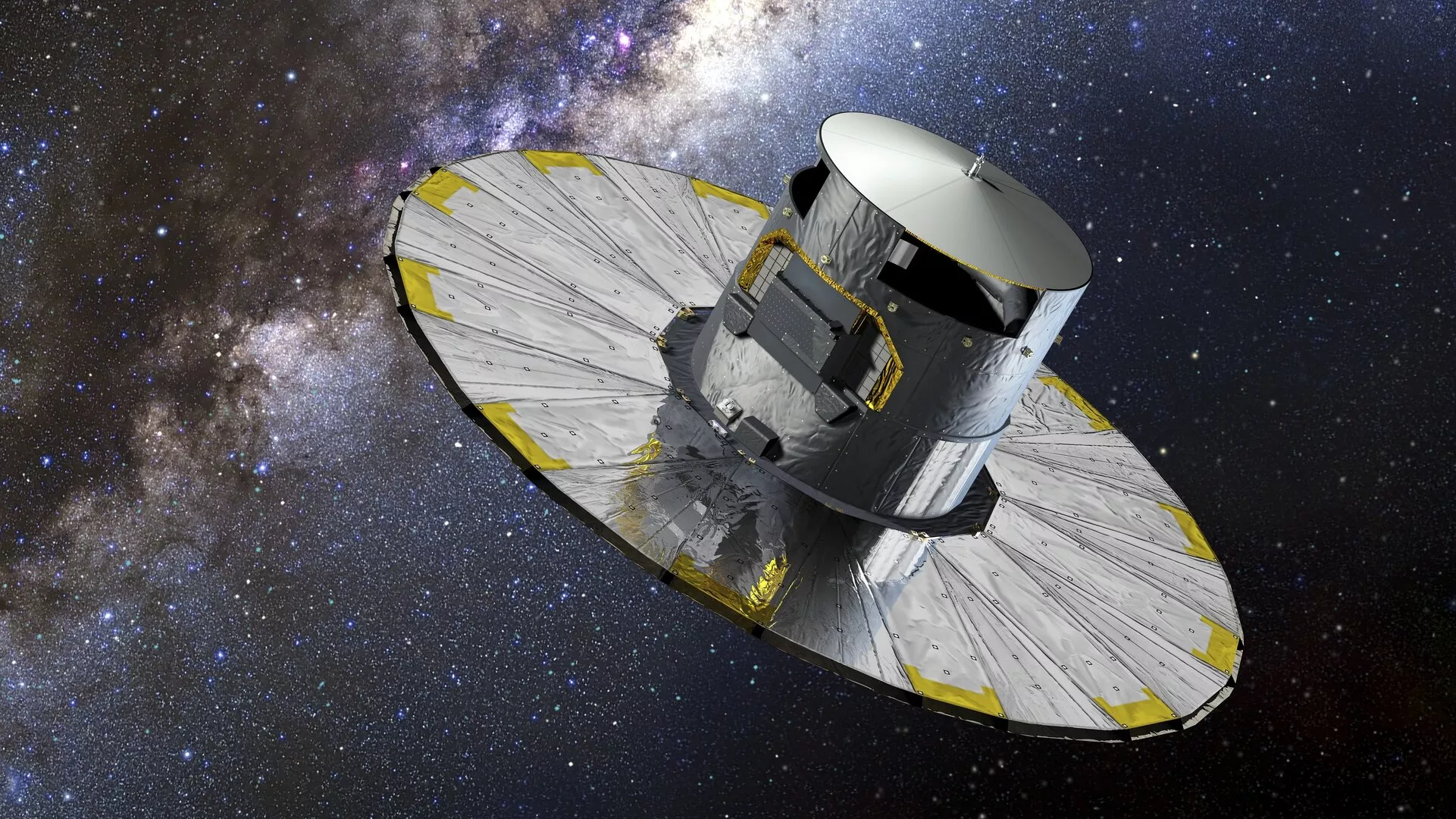According to a recent paper presenting a comprehensive analysis of over 68,000 scientific articles from the Directorate of Science of the European Space Agency (ESA), Hungarian space astronomers are the most successful among all ESA member countries in terms of proportional contribution. In this highly detailed analysis, researchers examined astronomical, planetary science, and solar physics research results achieved in the past nearly 50 years based on data from scientific missions realised under the leadership or with the involvement of ESA.
In the investigation carried out by Guido de Marchi and Arvind N. Parmar, they presented the effectiveness of space telescopes and space probes realised within the scientific programme of ESA, as measured in scientific publications. They extensively discussed the annual variations in the published results and performance indicators projected onto individual member states. In addition to temporal changes, they examined the geographical distribution of authors of scientific articles among the member countries of the agency. Subsequently, they compared these data with the financial contributions of individual countries to the ESA scientific programme.
In general, the findings reveal the unsurprising correlation that the larger a country's contribution to ESA financing, the more scientific articles members of that country's astronomical community publish. However, for some countries, researchers working there published new discoveries with notably higher efficiency based on ESA missions’ data: the Netherlands, Finland, and Hungary contributed significantly more to the individual programmes with their research and professional publications than their financial contributions would predict. During the examined period, Hungarian researchers authored over 200 first-author papers, which is 45% more than the calculation projected onto the 22 member countries would predict based on Hungary's budgetary contribution. The Netherlands and Finland show a performance surplus of 42% and 40%, respectively.

Percentage of scientific publications divided by percentage of financial contribution
(Source: HUN-REN CSFK KTM CSI)
As highlighted by the authors of the paper, a significant portion of Hungarian results relies on data from the Gaia astrometric space observatory (56 articles) and the Herschel infrared space telescope (31 articles). This is an extremely important metric, however, it is just one of many possible parameters used to evaluate a country's astronomical activities. While the analysis suggests that complex interactions of various reasons can influence the effectiveness of a country, it can be asserted that, relative to the financial contributions made, the Hungarian astronomical community converts the data from ESA missions into scientific discoveries most efficiently in Europe. It is worth considering this data with regard to which areas in astronomy and space research deserve further development and financial investment.
László Szabados, emeritus professor at HUN-REN CSFK KTM CSI, laid the foundation for Hungarian participation in the Gaia programme mentioned above. "With persistent work, we have managed to ensure that today nearly a dozen Hungarian astronomers are conducting world-class research based on the measurements of the revolutionary space observatory, Gaia, which creates a three-dimensional map of the Milky Way," said the researcher, who primarily focuses on the study of pulsating variable stars within the Gaia program.

The illustration of the Gaia space probe conducting observations (Source: ESA)
"The fact that the Hungarian space astronomy community participates in all exoplanetary space telescope missions of ESA is a recognition that our knowledge and experience are in the international forefront," stated Róbert Szabó, the Director of HUN-REN CSFK KTM CSI, who leads working groups in the ESA’s PLATO and ARIEL space telescope programs. "It is important to emphasize that, in addition to scientific research, we have also successfully engaged actors from the space industry in the execution of these missions," emphasized the astronomer, who increasingly relies on the application of artificial intelligence in his scientific research.
Ágnes Kóspál, an astronomer at HUN-REN CSFK KTM CSI, has been performing crucial expert work for years as a member of the Astronomy Working Group under the Science Programme Committee of ESA, contributing to the selection of future space programmes. " It can be quite challenging at times to determine which planned space programme is the most promising among the concepts submitted in the competitive process. As a professional evaluator, the goal is to objectively assess which of these programmes can yield the most exciting scientific discoveries within 10-15-20 years," explained the researcher.
ESA is an intergovernmental organisation uniting 22 member countries with the goal of advancing European space research, industry, and sciences. In its scientific programme, it plays leading and collaborative roles in constructing space telescopes, solar system probes, and solar physics space observatories. After several years of associated membership, Hungary joined as a full member in 2015. In 2023, the expansion of the ESA scientific programme continued with promising missions, including the launch of the JUICE Jupiter probe and the Euclid space telescope, with Hungarian participation.
Based on the above independent scientific data, members of the domestic astronomy community suggest that a future scientific ESA mission initiated and led by Hungary could provide not only new breakthrough opportunities for space astronomy but also elevate the developing domestic space industry to a higher level in an integrator role, thereby building on the existing close collaboration between science and the space industry in Hungary.
Publication:
Guido De Marchi and Arvind N. Parmar: "ESA Science Programme Missions: Contributions and Exploitation – ESA Mission Publications," prepared for publication in the ISSI Scientific Reports, preprint
https://doi.org/10.48550/arXiv.2402.12818